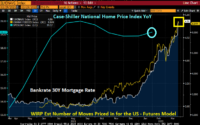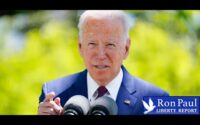Fed Officials Signal Higher Interest Rates Will Be Needed to Contain Inflation
A senior Federal Reserve official said the economy will need higher borrowing costs for a few years to bring down inflation and prevent price pressures from strengthening.
“We still have some work to do to get interest rates in the right place,” said New York Fed President John Williams at The Wall Street Journal’s CFO Network Summit in New York on Wednesday. “We need a sufficiently restrictive stance” of rates, and “we’re going to need to maintain that for a few years to make sure we get inflation to 2%.”
Fed officials last week approved lifting their benchmark federal-funds rate by a quarter-percentage point to a range between 4.5% and 4.75%. That was a smaller increase than at their previous two policy meetings, when they raised it by a half point in December and 0.75 point in November.
More From the cfo network summit
According to projections released after their December meeting, most officials thought they would raise the fed-funds rate to 5.1% this year, which would imply quarter-point rate increases at their next two meetings, in March and May. More than a third of officials anticipated lifting the rate above 5.25%, which would call for another increase in June. No officials projected rate cuts this year.
Mr. Williams said that those projections still provide “a very reasonable view of what we’ll need to do this year in order to get…inflation down,” he said.
The Fed began raising interest rates from near zero last March. Because it will take time to see the full economic effects of those increases, raising rates in quarter-point increments “seems like the right size to adjust policy,” he said.
Separately, Fed governor
Christopher Waller
said he was optimistic that the Fed’s rate increases were slowing the economy. “We are seeing that effort begin to pay off, but we have farther to go,” he said in remarks Wednesday at Arkansas State University in Jonesboro, Ark. “And it might be a long fight, with interest rates higher for longer than some are currently expecting.”
Their comments come a day after Fed Chair
Jerome Powell
said the labor market’s surprising strength underscores why bringing inflation down will take longer and require higher interest rates than many investors have been anticipating.
Overall inflation has been slowing largely because prices of energy and other goods are falling. Large increases in housing costs have slowed, but haven’t yet filtered through to official price gauges. Officials are paying close attention to what happens to prices in the rest of the economy—primarily the labor-intensive services sector—as a gauge of underlying price pressures.
“There’s definitely scenarios where inflation ends up being more persistent for various reasons,” Mr. Williams said. “Maybe we don’t see a continued reduction in some of the goods prices we’ve seen recently, or maybe some of these prices stay elevated.”
That situation would call for “somewhat higher interest rates in order to get that sufficiently restrictive stance of policy,” he said.
In the same vein, Mr. Waller highlighted the risk that strong hiring could provide fuel that prevents inflation from coming down as quickly as his colleagues hope.
U.S. employers added a much higher-than-anticipated 517,000 jobs in January, bringing the unemployment rate to a 53-year low of 3.4%, the Labor Department said last week.
“Such employment gains mean labor income will also be robust and buoy consumer spending, which could maintain upward pressure on inflation in the months ahead,” Mr. Waller said.
Write to Harriet Torry at [email protected] and Nick Timiraos at [email protected]
Copyright ©2022 Dow Jones & Company, Inc. All Rights Reserved. 87990cbe856818d5eddac44c7b1cdeb8
Appeared in the February 9, 2023, print edition as ‘Fed Officials Signal Higher Rates Needed.’
[ad_2]
Source link

